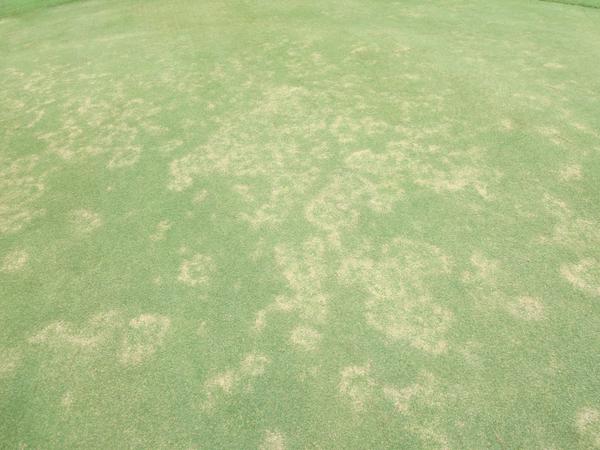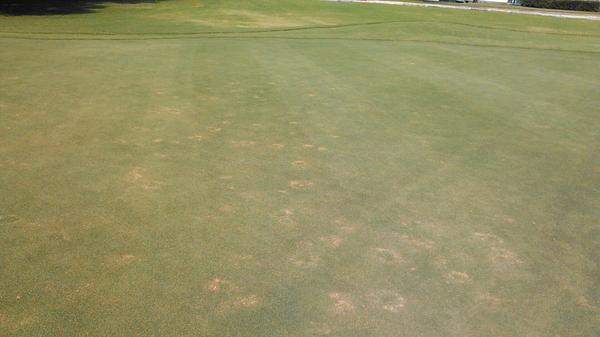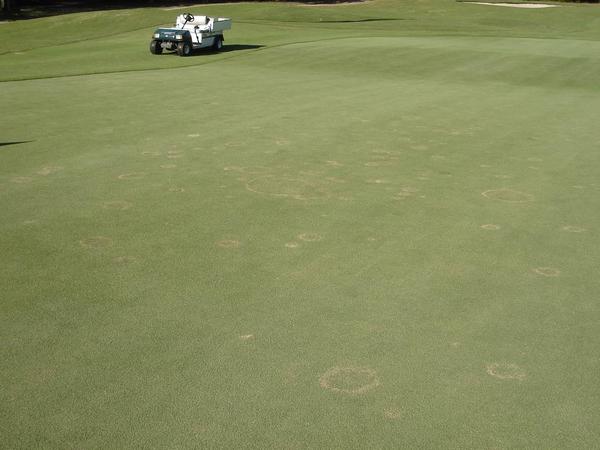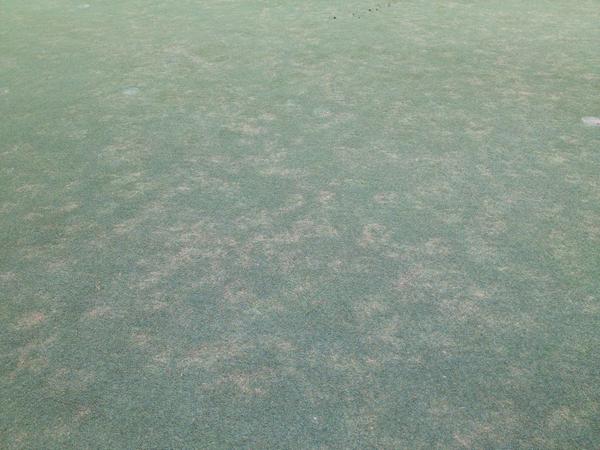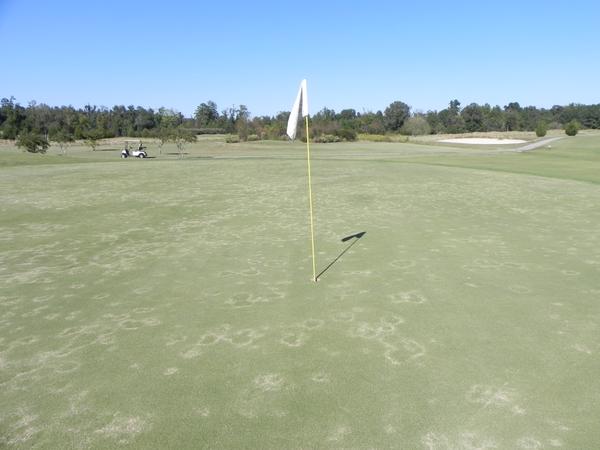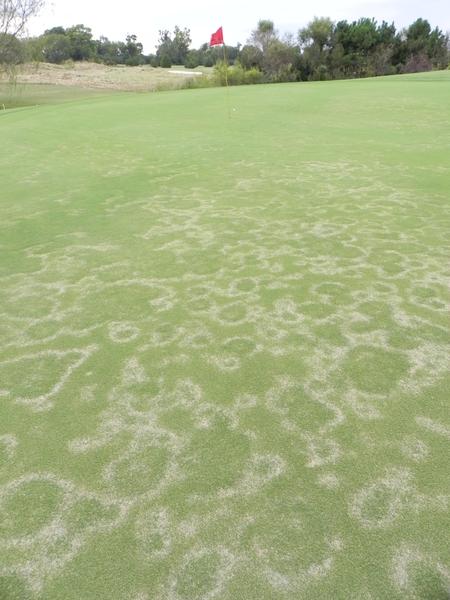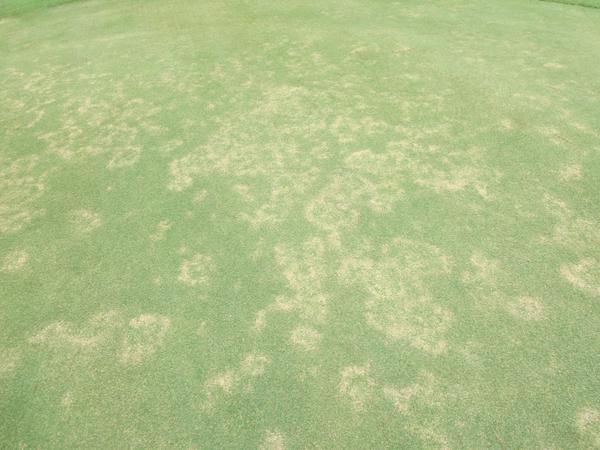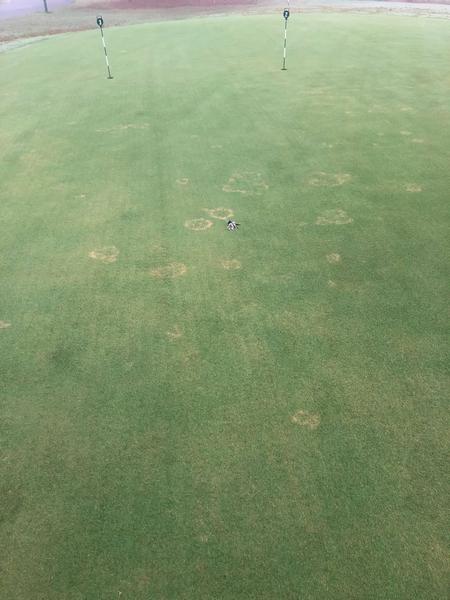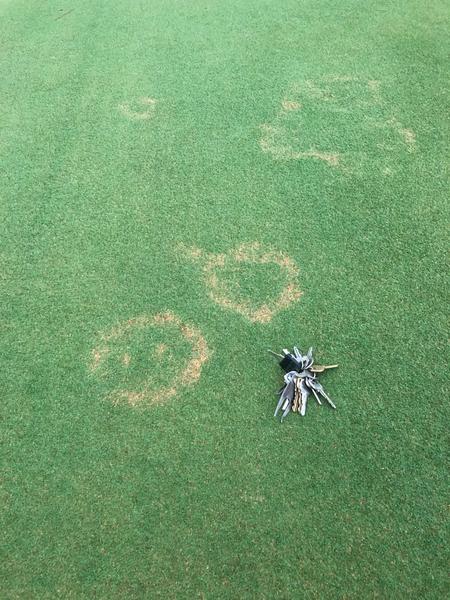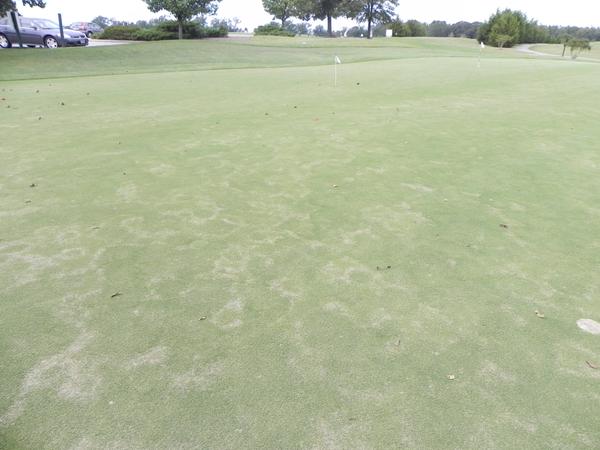Leaf and Sheath Blight in Turf
en Español / em Português
El inglés es el idioma de control de esta página. En la medida en que haya algún conflicto entre la traducción al inglés y la traducción, el inglés prevalece.
Al hacer clic en el enlace de traducción se activa un servicio de traducción gratuito para convertir la página al español. Al igual que con cualquier traducción por Internet, la conversión no es sensible al contexto y puede que no traduzca el texto en su significado original. NC State Extension no garantiza la exactitud del texto traducido. Por favor, tenga en cuenta que algunas aplicaciones y/o servicios pueden no funcionar como se espera cuando se traducen.
Português
Inglês é o idioma de controle desta página. Na medida que haja algum conflito entre o texto original em Inglês e a tradução, o Inglês prevalece.
Ao clicar no link de tradução, um serviço gratuito de tradução será ativado para converter a página para o Português. Como em qualquer tradução pela internet, a conversão não é sensivel ao contexto e pode não ocorrer a tradução para o significado orginal. O serviço de Extensão da Carolina do Norte (NC State Extension) não garante a exatidão do texto traduzido. Por favor, observe que algumas funções ou serviços podem não funcionar como esperado após a tradução.
English
English is the controlling language of this page. To the extent there is any conflict between the English text and the translation, English controls.
Clicking on the translation link activates a free translation service to convert the page to Spanish. As with any Internet translation, the conversion is not context-sensitive and may not translate the text to its original meaning. NC State Extension does not guarantee the accuracy of the translated text. Please note that some applications and/or services may not function as expected when translated.
Collapse ▲Symptoms
Leaf and sheath blight (a.k.a. mini ring), caused by Rhizoctonia zeae, appears in late summer as yellowing or bronzing of turf in patches and/or rings ranging from 3 to 24 inches in diameter. There are no distinct spots or lesions on the leaf blade, but lower leaves may appear bleached or blighted. When stand symptoms are severe, leaf sheaths, stolons, and nodes will be necrotic. Symptoms are often most prevalent from late July through October. Patches/rings are very distinct and are challenging to heal when symptoms coincide with shorter days and cooler temperatures. Although symptom development occurs in late summer/early fall, patches/rings can persist through spring.
Development Factors
R. zeae is most active July through September based on isolations from ultradwarf bermudagrass putting greens. The pathogen was thought to only infect leaves and sheaths, but recent research demonstrates colonization of roots and other below ground tissue. The optimal temperature for R. zeae growth is between 83 and 97oF. Low nitrogen fertility and mechanical damage (aerification and/or verticutting) amplify symptom expression. Symptoms are most severe during prolonged dry spells. The epidemiology of this disease is not well understood.
Cultural Control
This disease is most severe when the turf is under stress. Therefore, management strategies that reduce stress such as raising mowing heights, limiting extreme plant growth regulation, and avoiding aggressive verticutting during July and August help minimize symptom development.
The most important management strategy for this disease is using urea as the nitrogen source. Research demonstrated that rates from 0.1 to 0.3 lb nitrogen/1,000 square feet weekly dramatically reduced disease severity. In this research, urea was solely applied from June 1 to September 30. Sites with a history of this disease should lean more towards the 0.3 lb nitrogen/1,000 square feet rate. Simply switching to urea as a nitrogen source may not be sufficient if rates are too low or only used sporadically. Conversely, using ammonium sulfate as the nitrogen source enhanced disease severity.
Chemical Control
Fungicides for leaf and sheath spot are most effective when applied preventatively and using urea as a nitrogen source during the summer months (as mentioned above in cultural control). The pathogen is primarily found in stolons, nodes, and roots. Therefore, fungicides must be watered-in immediately with 1/8” irrigation. There is limited information on fungicide efficacy for this disease. However, R. zeae is most sensitive in vitro to the DMI and SDHI fungicide families.
* Products marked with an asterisk are not labeled for home lawn use.
| Fungicide and Formulation1 | Amount of Formulation2 | Application Interval (Days)3 | Efficacy Rating | Resistance Risk | FRAC Code4 |
| azoxystrobin (Heritage TL) | 2 | 14 to 28 | ++ | Low | 11 |
| azoxystrobin + acibenzolar-S-methyl (Heritage Action)* | 0.2 to 0.4 | 14 to 28 | ++ | Low | 11/P01 |
| azoxystrobin + difenoconazole (Briskway)* | 0.5 to 1.2 | 14 to 28 | +++ | Low | 11/3 |
| azoxystrobin + propiconazole (Headway) | 1.5 to 3 | 14 to 28 | +++ | Low | 11/3 |
|
benzovindiflupyr + difenoconazole (Ascernity)* |
1.0 | 14 to 21 | +++ | Low | 7/3 |
|
fluindapyr + flutriafol (Kalida) |
0.25 to 0.4 | 14 to 21 | ++ | Low | 7/3 |
| flutolanil (Prostar) (Pedigree) |
2.2 to 4.5 3.25 to 6.6 |
14 to 21 14 to 21 |
++ ++ |
Low Low |
7 |
| fluxapyroxad + pyraclostrobin (Lexicon) | 0.34 to 0.47 | 14 to 28 | +++ | Low | 7/11 |
| mefentrifluconazole + pyraclostrobin (Navicon)* | 0.7 to 0.85 | 14 to 28 | +++ | Low | 3/11 |
| penthiopyrad (Velista) | 0.3 to 0.5 | 14 | +++ | Low | 7 |
| polyoxin D (Affirm) | 0.88 | 7 to 14 | ++ | Low | 19 |
|
prothioconazole (Densicor)* |
0.196 | 14 to 21 | ++++ | Low | 3 |
|
pydiflumetofen + azoxystrobin + propiconazole (Posterity XT)* |
1.5 to 3 | 14 to 28 | +++ | Low | 7/11/3 |
| pyraclostrobin (Insignia) | 0.4 to 0.7 | 14 to 28 | +++ | Low | 11 |
| 1 Other trade names with the same active ingredients are labeled for use on turfgrasses and can be used according to label directions. 2 Units are oz, fl oz, or lb depending on formulation. Apply fungicides in 2 to 5 gallons of water per 1,000 square feet according to label directions. Use lower rates for preventive and higher rates for curative applications. 3 Use shorter intervals when conditions are very favorable for disease. 4 Fungicide Resistance Action Committe code. Products with same code have the same mode of action and are in the same chemical class. * Products marked with an asterisk are not labeled for home lawn use. |
|||||
| Efficacy Rating ++++ = excellent control when conditions are highly favorable for disease development +++ = good control when disease pressure is high, excellent control when disease pressure is moderate ++ = good control when disease pressure is moderate, excellent control when disease pressure is low + = good control when disease pressure is low ? = not rated due to insufficient data |
|||||
| Resistance Risk Low = Rotate to different chemical class after 3-4 applications; tank mixing not necessary Medium = Rotate to different chemical class after 1-2 applications; tank-mixing with low or medium risk product recommended High = Rotate to different chemical class after EVERY application; tank-mix with low or medium risk product for EVERY application ? = not rated due to insufficient data |
|||||



